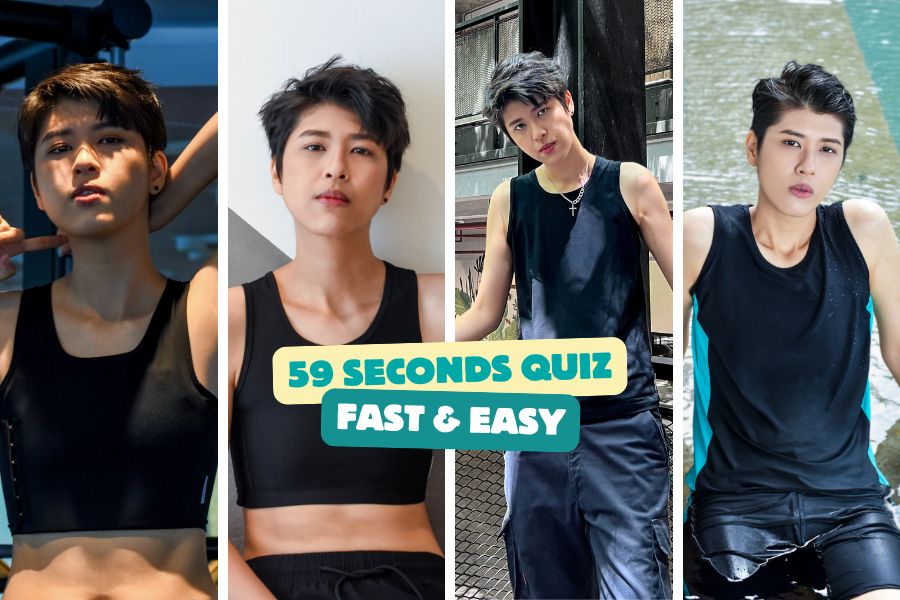Chest binders are a transformative tool for transgender men, nonbinary individuals, and anyone seeking to achieve a flatter chest and feel more aligned with their identity. But not all binders are created equal, and choosing the right one can make all the difference when it comes to comfort, effectiveness, and safety.
Binders come in various styles, materials, and compression levels, each with its own advantages and disadvantages. Finding the right one for your needs requires understanding what’s available, how it will work for your body, and how to use it safely.
This guide will walk you through everything you need to know about binder materials, their pros and cons, and tips for choosing one that’s both safe and effective.

Why Binder Material Matters
The material of a chest binder impacts its durability, comfort, compression level, and breathability. Different materials suit different needs, body types, and lifestyles, so it’s important to consider how and when you’ll be wearing your binder.
Choosing the right material can:
- Improve your comfort, especially for long wear or hot weather.
- Reduce skin irritation or chafing.
- Provide the appropriate level of compression for your chest size and shape.
Let’s dive into the most common binder materials and their benefits and drawbacks.

Common Materials Used in Binders
1. Spandex/Nylon Blends
Spandex and nylon blends are among the most popular materials for chest binders. These synthetic fabrics are stretchy, lightweight, and highly compressive, making them a go-to choice for many binder brands.
Pros:
- Strong compression for effective flattening.
- Lightweight and flexible, allowing for a wide range of motion.
- Durable and resistant to stretching out over time.
- Often moisture-wicking, which helps with sweat in hot weather or during physical activity.
Cons:
- Can feel too tight or restrictive if the wrong size is chosen.
- Less breathable than natural fabrics, which can cause discomfort in hot climates.
- May irritate sensitive skin if not lined with softer material.
Best For:
People who want maximum compression and durability, especially those with medium to larger chests.

2. Cotton Blends
Cotton blends combine the natural softness of cotton with the flexibility of synthetic fabrics like spandex or polyester. These binders are often softer and more breathable than full synthetic options.
Pros:
- Soft and gentle on the skin, ideal for sensitive skin types.
- More breathable than spandex/nylon blends, making them comfortable for extended wear.
- Feels lighter and cooler in warm weather.
Cons:
- May not provide as much compression as fully synthetic options.
- Cotton tends to absorb moisture, which can lead to discomfort or odors if worn for long periods without washing.
- May stretch out more quickly over time.
Best For:
People with sensitive skin or those looking for a lighter, more breathable binder for daily wear.

3. Mesh or Moisture-Wicking Fabrics
Some binders are designed specifically for hot climates or active lifestyles, using mesh panels or moisture-wicking fabrics to improve ventilation and reduce sweat buildup.
Pros:
- Keeps you cooler and drier during hot weather or physical activity.
- Lightweight and breathable, making it more comfortable for extended wear.
- Flexible and less restrictive.
Cons:
- May offer less compression than heavier, more structured materials.
- Mesh panels can sometimes feel flimsy or stretch out faster.
Best For:
People who live in hot climates or want a binder for light physical activity. (but remember not to bind during intense exercise).

Pros & Cons of Different Binder Styles
In addition to materials, binder style plays a huge role in comfort and effectiveness. Each style has its own benefits and drawbacks depending on your body shape, activity level, and how you want to use your binder.
1. Full-Length Binders
These binders extend from the chest to the hips, offering compression for the chest and torso.
Pros:
- Provides even compression across the chest and torso, smoothing out your silhouette.
- Great for people with larger chests who want more coverage and support.
- Can double as shapewear.
Cons:
- Can feel restrictive or hot, especially in warm climates.
- May roll up at the hips if not sized correctly.
Best For:
Individuals with larger chests or those looking for full torso compression.

2. Half-Length Binders
Half-length binders cover only the chest area and stop at the midsection.
Pros:
- Easier to put on and take off compared to full-length binders.
- Cooler and more breathable, ideal for hot weather or long wear.
- Provides chest compression without compressing the stomach.
Cons:
- May not provide enough coverage for larger chests.
- The bottom hem can roll up for some body types.
Best For:
Individuals with smaller or medium-sized chests or those who prioritize comfort and breathability.

3. Binder Tank Tops
Binder tank tops combine chest compression with the appearance of a regular tank top.
Pros:
- Discreet and versatile—can double as a layering piece or be worn on its own.
- Easy to incorporate into everyday outfits.
Cons:
- Compression may not be as strong as traditional binders.
- Less common and often more expensive.
Best For:
People looking for a more casual, versatile option for layering or light compression.

Safety Tips for Choosing and Using a Binder
While chest binders are a great tool for reducing dysphoria and boosting confidence, it’s important to use them safely to avoid discomfort or injury. Here are some essential safety tips:
1. Prioritize the Right Size
- Always refer to the sizing chart provided by the binder brand.
- Never size down to achieve extra compression—it’s unsafe and can cause rib bruising, difficulty breathing, or long-term damage.
2. Don’t Wear Your Binder for Too Long
- Limit binding to 8 hours per day.
- Give your body regular breaks, especially if you’re binding daily.
3. Avoid Sleeping or Exercising in a Binder
- Your body needs to expand while sleeping and during physical activity. Binding during these times can be dangerous.
4. Rotate Between Binders
- If you wear a binder often, having more than one allows you to alternate and let each binder “rest.”
5. Care for Your Binder
- Hand wash or use a gentle cycle with cold water.
- Air dry to prevent shrinking or damaging the elastic.
6. Listen to Your Body
- If you experience pain, discomfort, or shortness of breath, remove your binder immediately.
- Seek medical advice if persistent issues occur.

Choosing the right chest binder is about more than just flattening your chest—it’s about finding a product that makes you feel comfortable, confident, and safe. By understanding binder materials, styles, and how to use them responsibly, you can find the perfect fit for your body and lifestyle.
Whether you’re binding daily, occasionally, or exploring options for the first time, remember that your journey is yours to define. Your comfort and well-being should always come first.


















Leave a comment